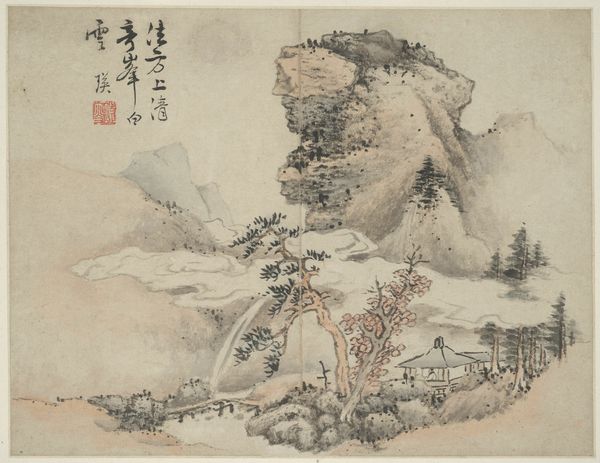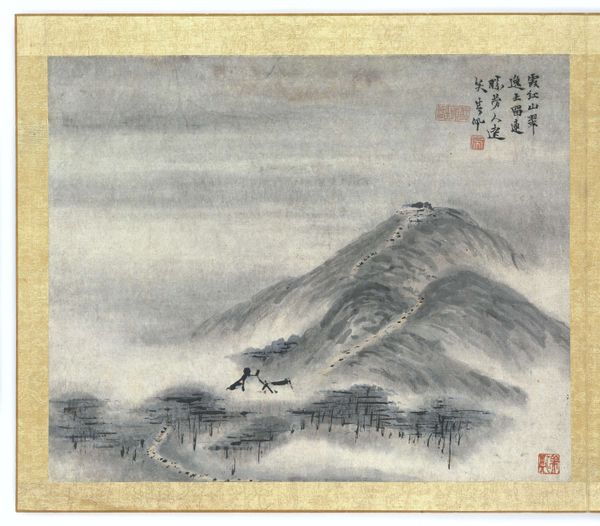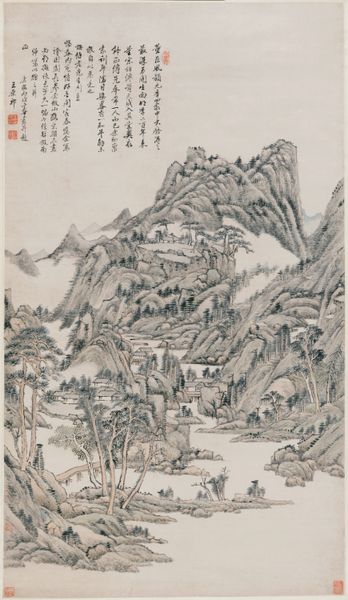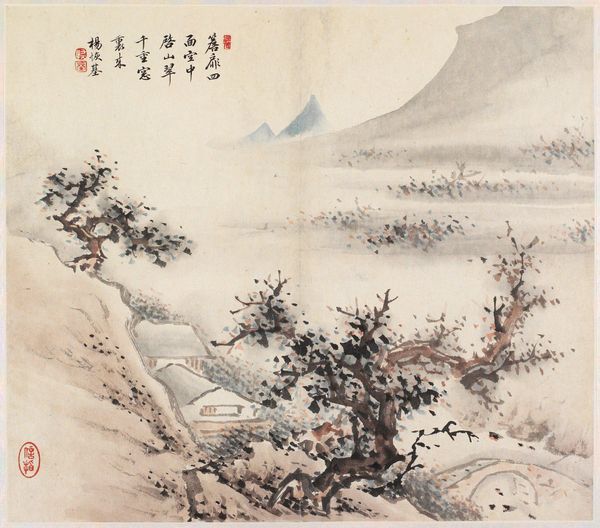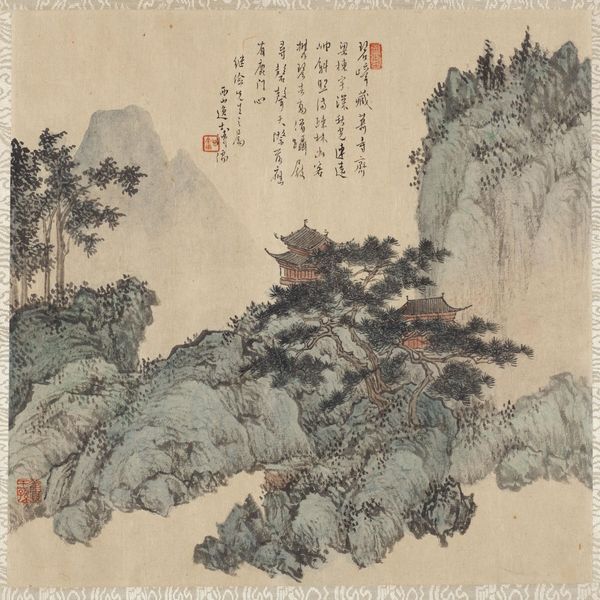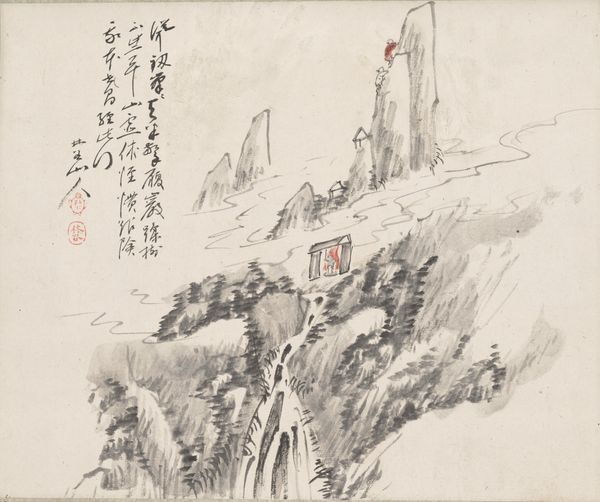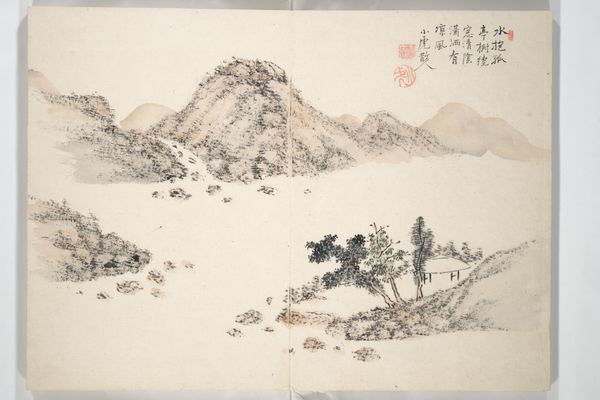
tempera, painting, watercolor, ink
#
water colours
#
tempera
#
painting
#
asian-art
#
landscape
#
oil painting
#
watercolor
#
ink
#
watercolor
Dimensions: height 27.2 cm, width 33.2 cm
Copyright: Rijks Museum: Open Domain
Editor: So this is "Schildering," which translates to "Painting" from the period of 1700 to 1750, made with tempera, watercolor, and ink. Gao Qipei is the artist. It has an understated feel, and the textures created by the ink are quite evocative. What are your thoughts when you see this? Curator: For me, the most compelling aspect lies in understanding Gao Qipei's innovative technique. Finger painting, as a deliberate method of production, challenges the conventional hierarchy of artistic skill tied to brushwork. What socioeconomic circumstances might have driven this embrace of such a raw, immediate process? Editor: I hadn't thought about that at all. It does feel like a statement. Do you think there’s commentary here on the materials themselves, the cheapness of ink versus more prestigious media? Curator: Possibly. Furthermore, we should consider the role of the patron and the intended audience. Who was consuming this art, and what were their expectations? Did the reception of his art differ, given this non-traditional approach to making landscape painting? Editor: It makes me wonder about the labor involved. Finger painting seems like it could be physically demanding, even if it perhaps bypassed years of traditional training with brushes. Curator: Precisely! That physicality is often overlooked. By emphasizing the tactile interaction between the artist's body and the materials, Qipei elevates the act of creation. Considering how it changes our understanding of both 'art' and 'craft.' Editor: This has completely changed how I view this piece. I was initially just responding to its aesthetic. Now, I am intrigued by how it upends conventional notions of artistic labor and skill. Curator: Indeed. By exploring the processes and the socioeconomic implications embedded within the materials, we uncover a much richer narrative.
Comments
No comments
Be the first to comment and join the conversation on the ultimate creative platform.
